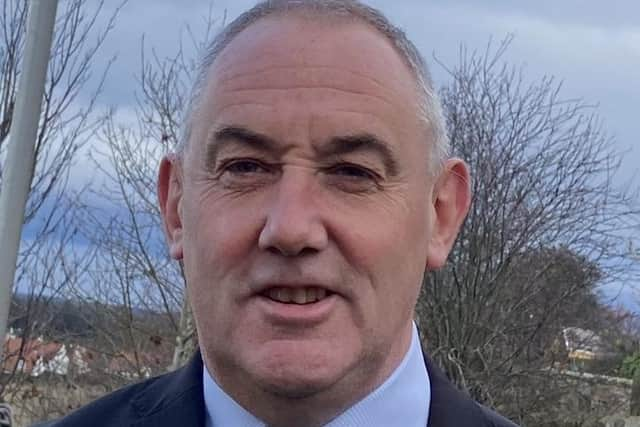School concrete safety: Scottish Government doesn't yet know the full extent of dangerous RAAC concrete in schools
The Scottish Government says it is still trying to establish how many schools have “potentially fatal” concrete in them.
At least 17 schools have been identified as having RAAC in their buildings, with some schools being forced to close off some of their classrooms.
Advertisement
Hide AdAdvertisement
Hide AdThis comes after more than 150 schools in England were identified as containing this potentially dangerous concrete, with many now closing buildings or classrooms to make them safe.


RAAC is reinforced autoclaved aerated concrete, and was used in roofs, floors and walls from the 1950s up until the 1990s. It is cheaper than standard concrete because it is aerated, but it only has a lifespan of around 30 years.
The Health and Safety Executive says RAAC is now beyond its lifespan and may “collapse with little or no notice”. The schools in Scotland identified as having RAAC include seven in Edinburgh, five in West Lothian, two in the Highlands, one in Perth, one in Moray, and one in East Lothian.
However, figures from the Scottish Lib Dems back in May suggest there were 37 schools in Scotland with RAAC, including in Dumfries and Galloway, Aberdeen, Clackmannanshire, Dundee, North Lanarkshire and Argyll and Bute. Pupils at two primary schools in Edinburgh were also moved into temporary classrooms in July because of this issue.
Housing minister Paul McLennan said councils were now carrying out assessments on their school buildings and wee to report back to the Scottish Government by next week. He said there was safety work being done on a school in East Lothian and another in West Lothian.
Speaking on BBC’s Good Morning Scotland, Mr McLennan said: “There are a few schools already, one in East Lothian, one in West Lothian, that we’re dealing with the local authorities at the moment. Local authorities are undertaking assessments and we’re expecting that back next week.
“Depending on each situation, we’ll work closely with the local authorities in terms of the work they need to do to make the schools safe. We’ve already done that in East and West Lothian.”
He was then asked if any pupils in Scotland are sitting in schools with faulty concrete.
Advertisement
Hide AdAdvertisement
Hide AdMr McLennan said: “No – there’s been initial assessments carried out and we identified the two schools and took some action. There have been some classrooms that have been closed off.”
However, this is not something the Scottish Lib Dems agree with, with the party saying Scottish ministers need to “pull their heads out of the sand”.
Party leader Alex Cole-Hamilton said: “We know this potentially fatal concrete is above students – it may be in other public buildings too. Ministers must set out how they will support cash-strapped schools, universities, hospitals and more to identify buildings at risk and cope with any necessary remedial works.”
He added: “Does Scotland have to have a tragedy before ministers take this seriously? This issue has been bubbling up for months and it’s ridiculous that the Scottish Government has failed to use the summer to rigorously assess the scale of the problem and get repairs underway.
“The Government needs to name the schools which have this concrete in place and say what measures are being taken to make them safe.”
The Scottish Government said it was taking the issue “very seriously” and buildings were now being examined by councils across the country. A spokesman said they expected to hear back from local authorities on what assessments they have made this week.
They added: “For those schools where RAAC is found, appropriate mitigation plans have and will be put in place to ensure the safety of pupils and staff. Ministers are clear that they expect local authorities to prioritise this work.
“We issued guidance and background on RAAC to the Association of Directors of Education in Scotland and Scottish Heads of Property Services networks. We will continue to work closely with all those bodies in responding to the challenge.”
Comments
Want to join the conversation? Please or to comment on this article.